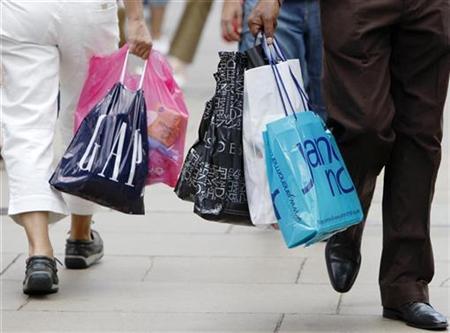Can consumers save our climate?

As climate change becomes an increasingly urgent priority for all of us, governments clearly have a crucial, central role to play. But governments don’t operate in a vacuum. Every one of us will need to think – sooner or later – about how we can use the leverage we can apply in our multiple roles as citizens, employers or employees, investors and, critically, voters, not simply as consumers.
Yes, we have seen major retailers like Wal-Mart launching major new initiatives such as their Sustainability Index, designed to pressure suppliers throughout their value chain to “green” their operations. But I have often argued that consumers are – at best – the equivalent of “shock-troops”. That is, they can be mobilised for short periods of time, as they have been on issues like CFCs, lead in petrol or genetically modified foods, bringing intense pressure to bear on various leverage points in the economy. But for sustained action we need concerted, effective and long-term action by business, by investors and governments.
On the positive side, however, there is growing evidence that consumers around the world are paying more attention to environmental issues, including climate change. Earlier this year, for example, The National Geographic Society and Canada’s GlobeScan released the second annual “Greendex” of sustainable consumption patterns across 17 countries. And it was a fairly sophisticated piece of work. A total of 65 lifestyle choices of consumers are included in the index, covering areas as diverse as energy use, transportation, housing, food and product purchases.
The headline result was that “sustainable consumer behaviour” had increased in 13 of the 14 countries surveyed in both 2008 and 2009. Perhaps surprisingly, but repeating last year’s results, the top-scoring consumers of 2009 – at least according to this analysis – are in the emerging economies of India, Brazil and China. By contrast, US and Canadian consumers again scored lowest. To look at the results from a different angle, consumers reporting the best year-on-year improvement in “environmentally sustainable” consumer behaviour turn out to be the Spanish, Germans, French and Australians – while Russians, unsurprisingly, and Mexicans show the smallest increase. Intriguingly, Brazilians were the only consumers measured in both 2008 and 2009 to show a fall in their Greendex score.
So what’s behind all of this? Much of the increase in the overall 2009 Greendex scores was due to improvement in the area of housing, where the Greendex measures the energy and resources consumed by people’s homes. Changes in the areas of personal transportation, food and consumer goods proved to be more mixed, with some up, some down. The changes have been driven by a complex mix of cost concerns and environmental awareness.
Consumption as measured by the Greendex is calculated both in terms of the choices consumers actively make – such as repairing, rather than replacing items, using cold water to wash laundry, or choosing green products rather than environmentally unfriendly ones – and choices that are controlled more by their circumstances – such as the climate they live in or the availability of green products or public transport.
All very interesting, but if you were to ask me which recent green-consumer-related initiative has me most excited about the potential to drive future consumer pressure on climate-related issues, I would point you elsewhere. Recent weeks have seen the launch in the United States of a new application (“app”) that runs on Apple’s iPhone, which will allow users to scan products using a phone fitted with a barcode scanner. I have tried the system, which is available from GoodGuide and is free, and it is extraordinary in terms of how quickly it recognises and processes a given barcode.
The new app can help consumers to make on-the-spot decisions about a growing range of products as they walk around stores. They are fed user-friendly information, along with rankings across product categories. So, for example, it can help consumers to choose the healthier of two moisturisers, determine what’s in various all-purpose cleaners or learn whether organic product manufacturers can boast good social practices alongside with their healthy manufacturing processes. As GoodGuide explains: “Consumers can scan a barcode in the supermarket aisle and immediately see detailed and independently researched ratings for health, environment and social responsibility for over 50,000 products and companies on the phone.”
More powerful still, GoodGuide aggregates information about which products are scanned most frequently and use that information to prioritise the products that are rated in future rounds of research. No, I don’t believe that this product will solve all our climate problems, but I do believe that it will give us all a better sense of our environmental footprints, if we are interested enough to look beyond the packaging and the price-tag.
Whether our future turns out to be more globalisation or more localisation, and I think that we will see both trends playing out simultaneously, better-informed consumers have the potential to be important drivers of business and government action on climate change. A huge opportunity space is opening up to mobilise them in new ways. The unanswered question: will Chinese consumers be part of the problem or, in increasingly large numbers, part of the solution? It is no exaggeration to say the future of our world hangs on the answer.
With thanks to Open Democracy.
